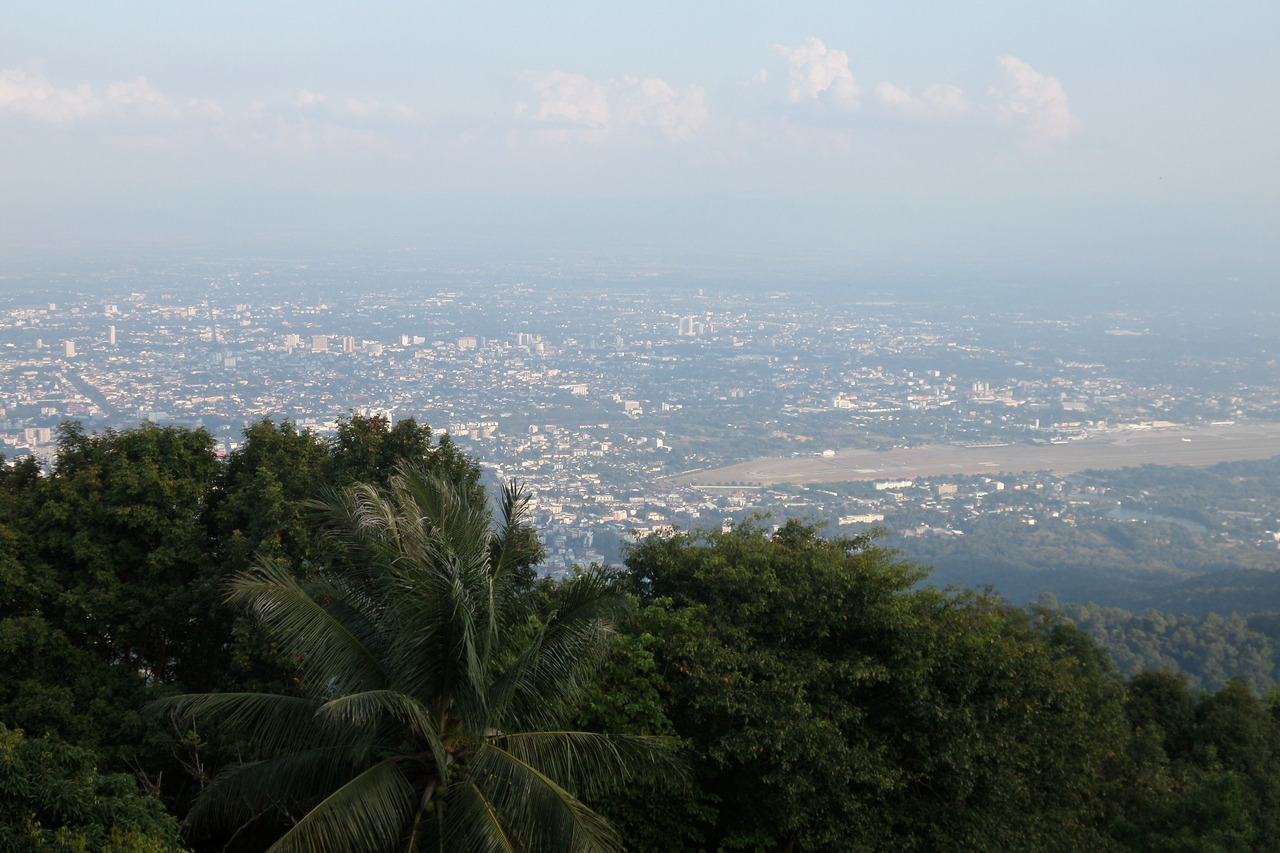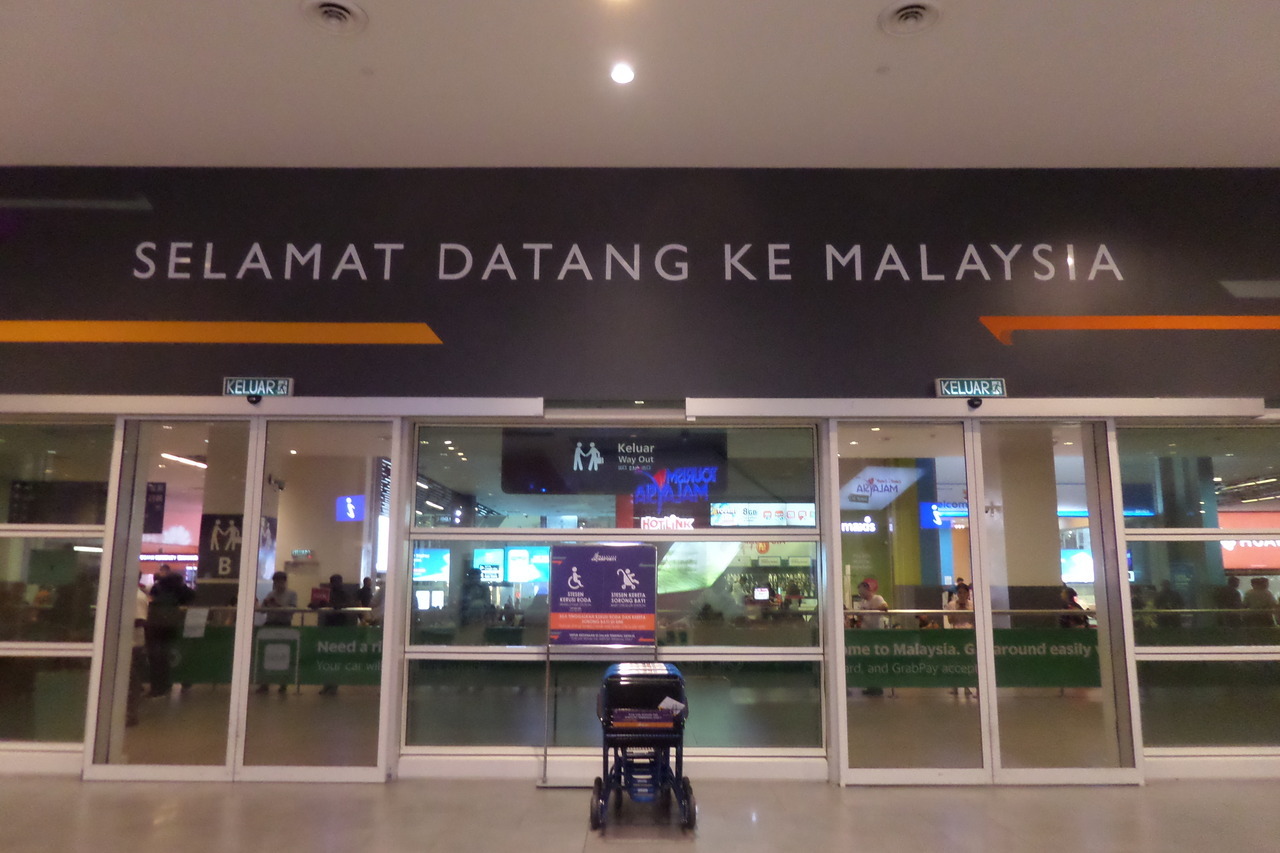Borobudur and Prambanan are two of the highlights of all Indonesia, so if you are somewhere nearby (e.g. Bali or somewhere else in Java), it is worth visiting them. I am sure you will like at least one of the temple complexes, and the city of Yogyakarta and Solo are also nice places.
Borobudur
Borobudur is a Buddhist temple that was originally built in the 8th and 9th centuries, but was abandoned when the Javanese turned to Islam, and then “rediscovered” by the British colonists in the early 19th century. Since then, Borobudur (together with Prambanan) have been two of the most visited sights in Indonesia. Borobudur is also a UNESCO World Heritage site.
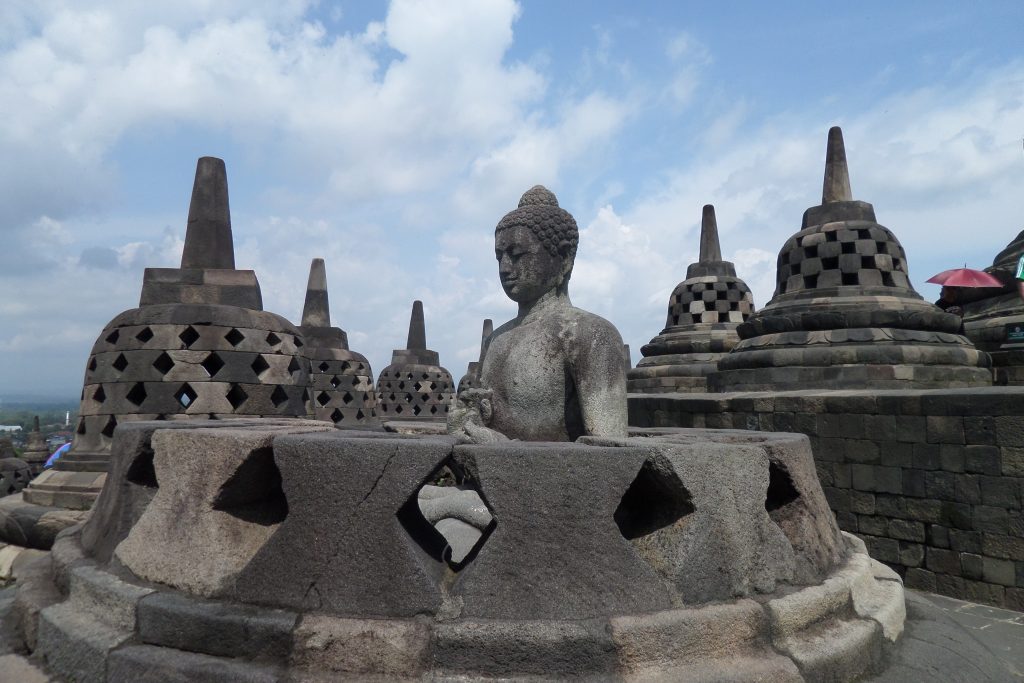
The construction plan of the temple uses a special religious symbolism, with three stages leading you through different stages of the Buddhist cosmological concept. There are five terraces around a central large stupa, and with hundreds of smaller stupas with a Buddha statue inside them. It is a place of pilgrimage for many buddhists too.
The building is very well preserved, but there are concerns that it may be endangered by mass tourism on the one hand, and by the active volcano, Mount Merapi nearby on the other hand, which has already caused considerable damage to both Prambanan and Borobudur.
I am actually more worried about irresponsible tourists, who, as I have witnessed, don’t respect the signs (and don’t follow common sense either), and touch the walls, the carved figures, the reliefs and the statues wherever they can.
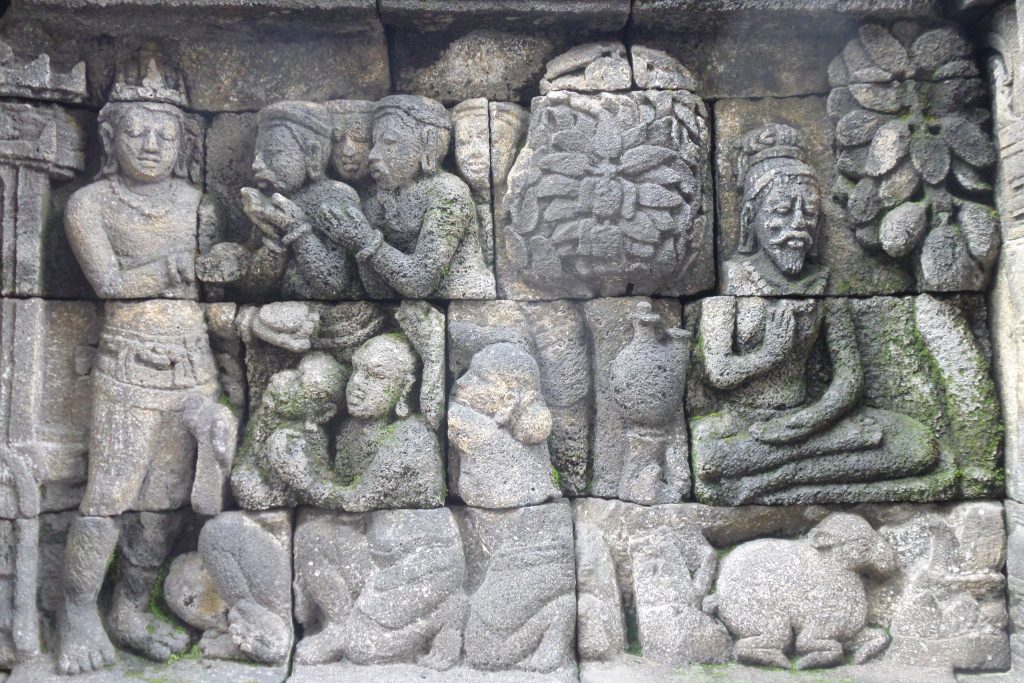
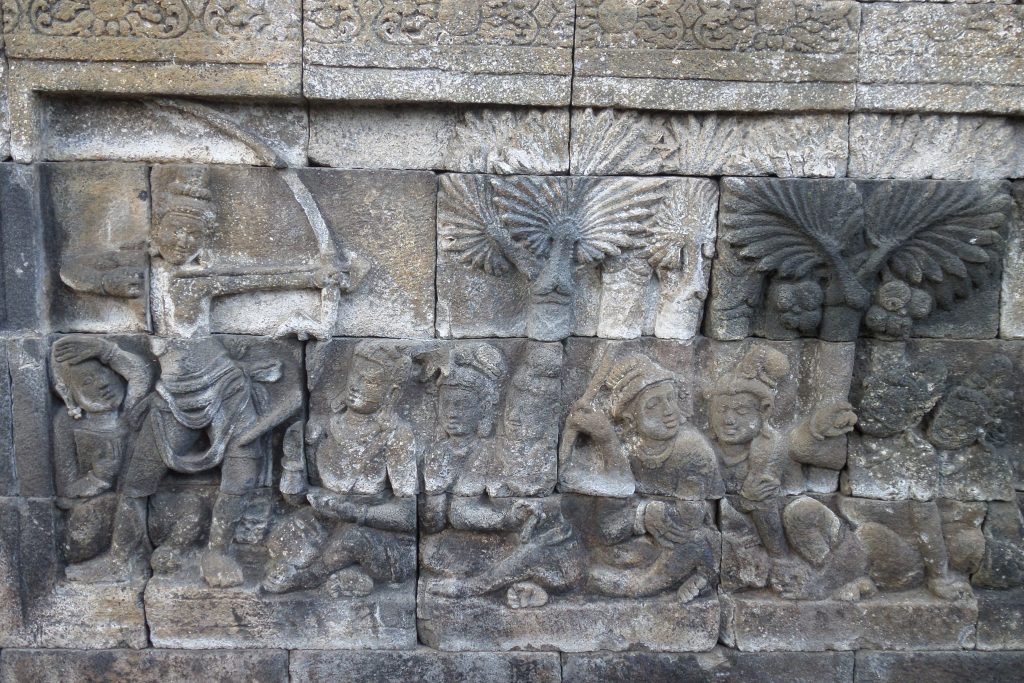
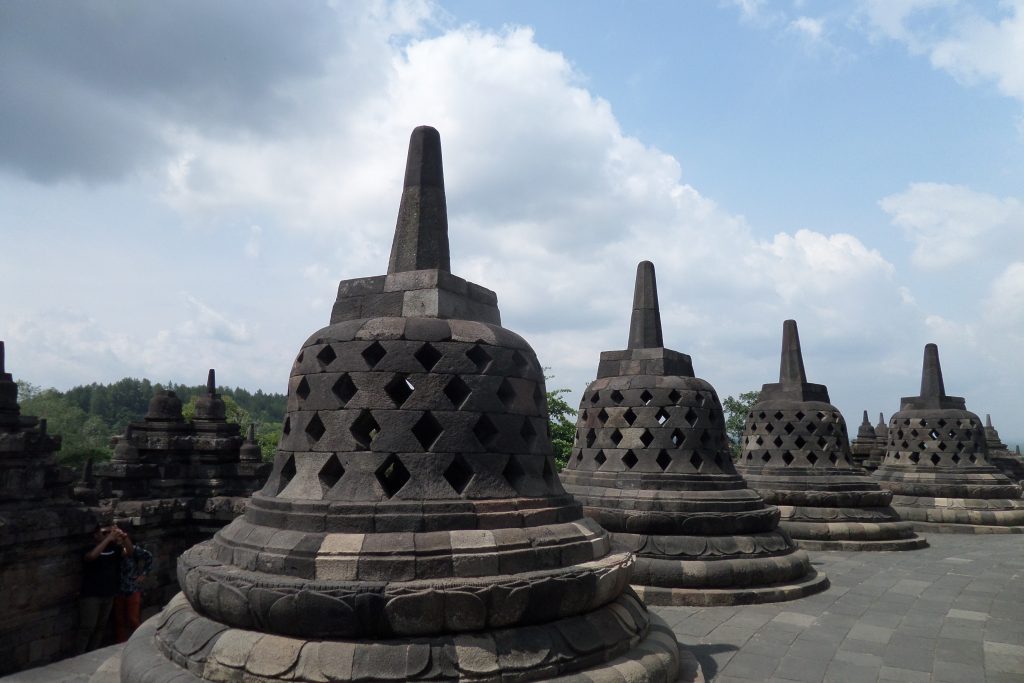


Prambanan
Prambanan is a collection of Hindu temples built in the 9th or 10th century, dedicated to Shiva. It is also a UNESCO World Heritage site. The walls are decorated with scenes from the Ramayana, with stories about Brahma, Vishnu and Shiva.
When we say Prambanan, we mean al the temple complex on the site, which contains 240 temples according to UNESCO. Some of them were built as early as the 8th century. You will see shockingly beautiful bas-reliefs on the walls on almost each of the temples, most of which are still in a very good condition.
The temple complex covers a large area, and includes other temples, too, of which Sewu and Bubrah are the two main sights definitely worth visiting. For some reason, when I was there, there were a lot of people walking around the main temples and its smaller buildings, but I was literally alone when I went to see Sewu and Bubrah nearby – also included in the ticket price. I especially liked Sewu with the large guardian statues.
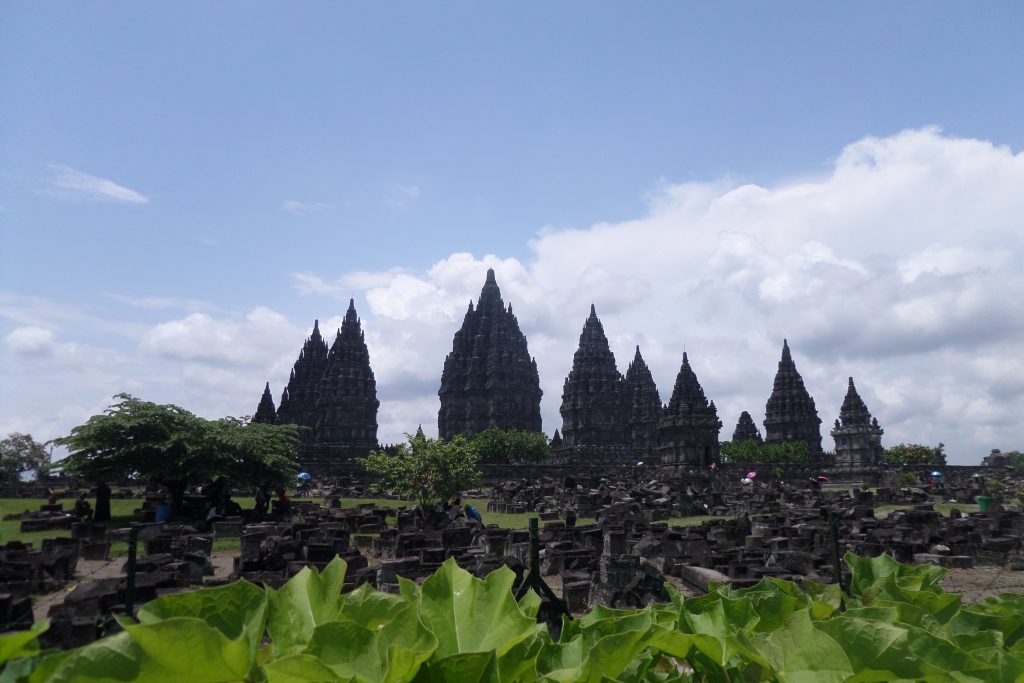
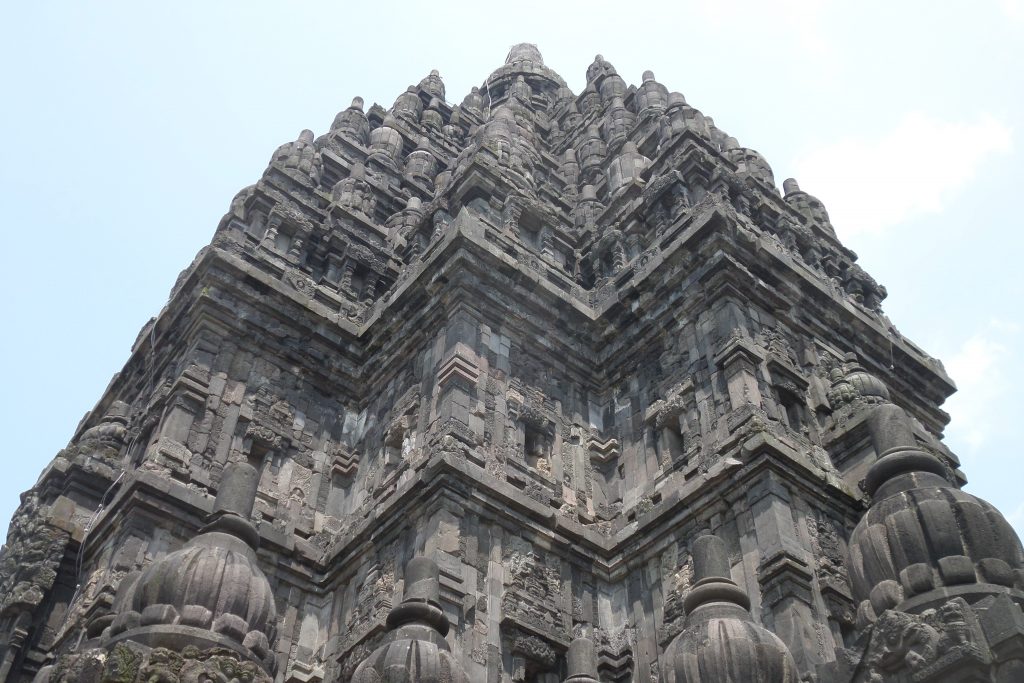
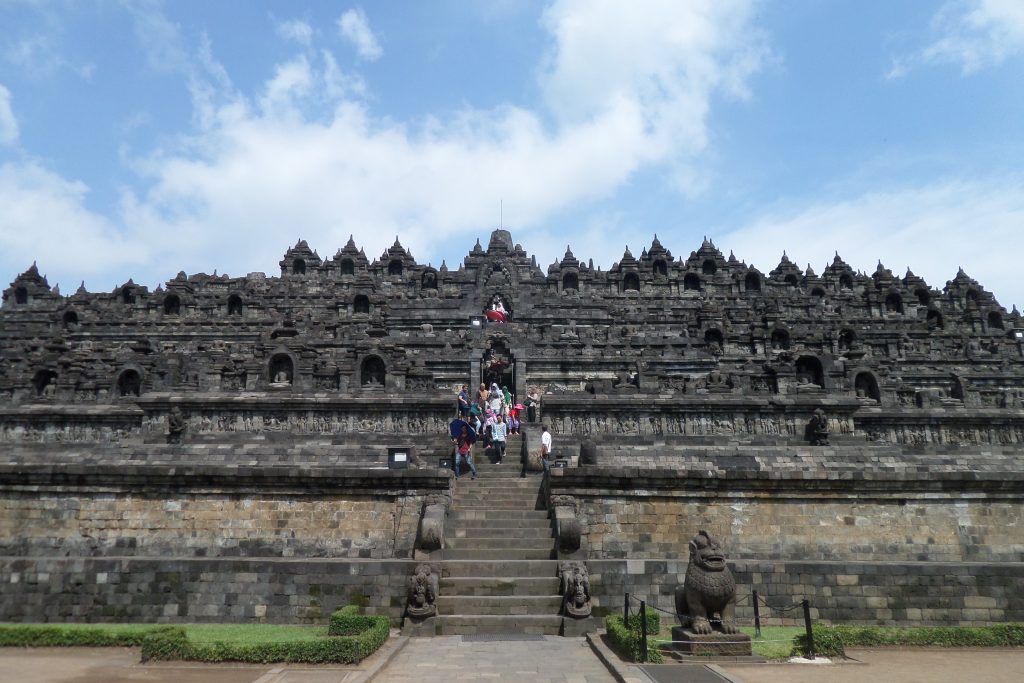
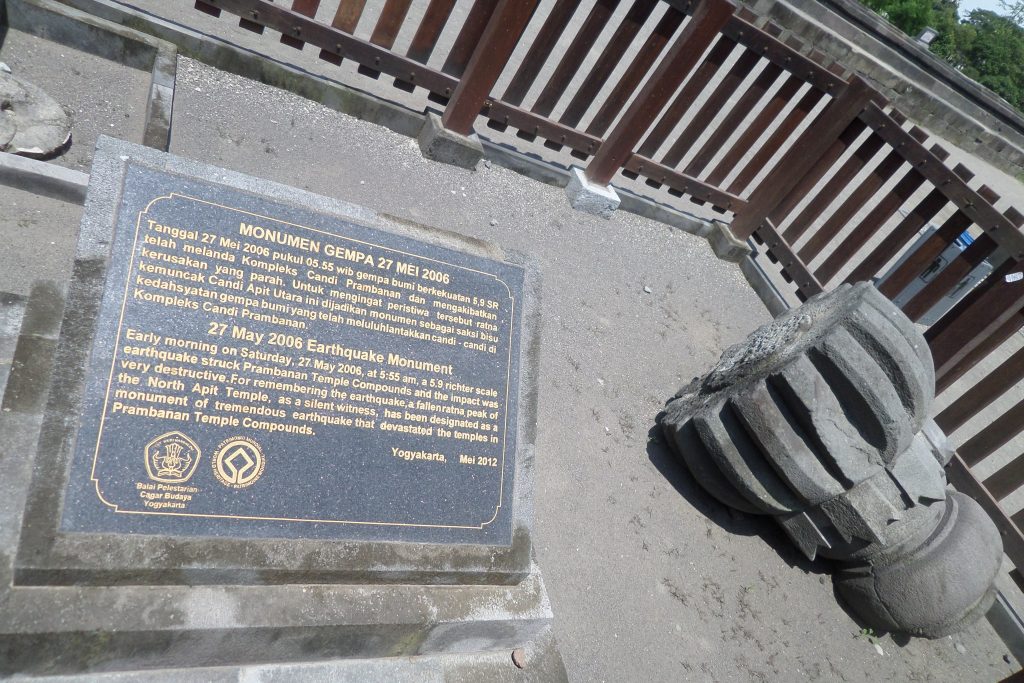
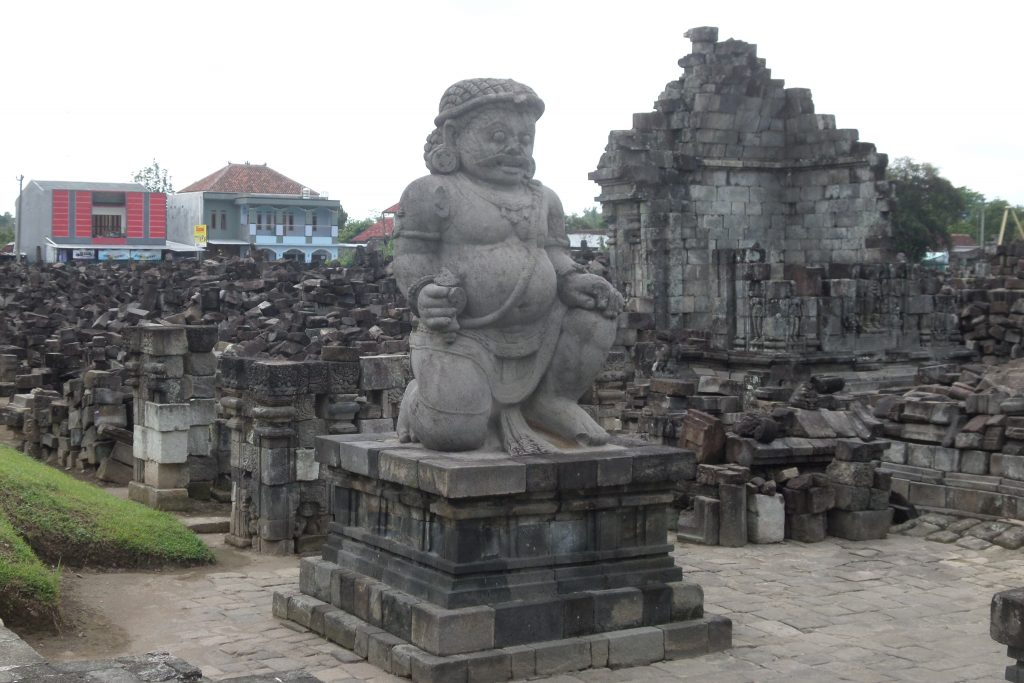
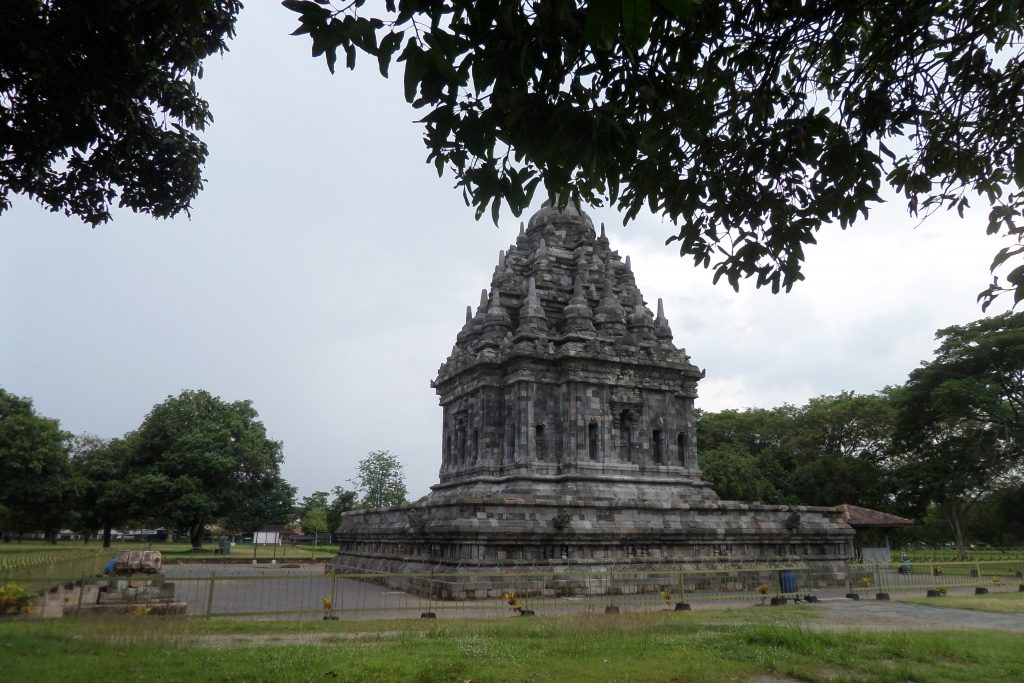
How to get to Borobudur and Prambanan
Private transport
To reach Borobudur and Prambanan, you will have to travel to Yogyakarta, a city worth exploring in itself. If you want, you can find a travel agency or a tour organiser, of which there are many in the centre of Yogja in Malioboro street. This will cost you anywhere between a 100 USD and the sky. This is a huge amount of money in Yogyakarta, but if you don’t want to bother with organising things for yourself, this is the way to go. If you want to book ahead, search online, you will find dozens of companies who organise trips to Borobudur and Prambanan.
If you want to spend less, but still want it to be comfortable, another option is to hire a taxi, which will cost you much less. I haven’t tried this myself, so I cannot give you tips right now, but I am sure you can just ask a taxi driver or a Grab driver about it. If you want to do this, make sure you agree on the price, the route, the times, whether he/she will wait for you and where, what is included in the price and what is not. I you visit both places on the same day, hire the driver for the whole day.
The third option is the one that people like me, who travel on a budget, will appreciate, and this is what I tried myself: the do-it-yourself way of getting there and back, using public transport.
Public bus to Borobudur
First, get to Terminal Jombor, marked on the map below.
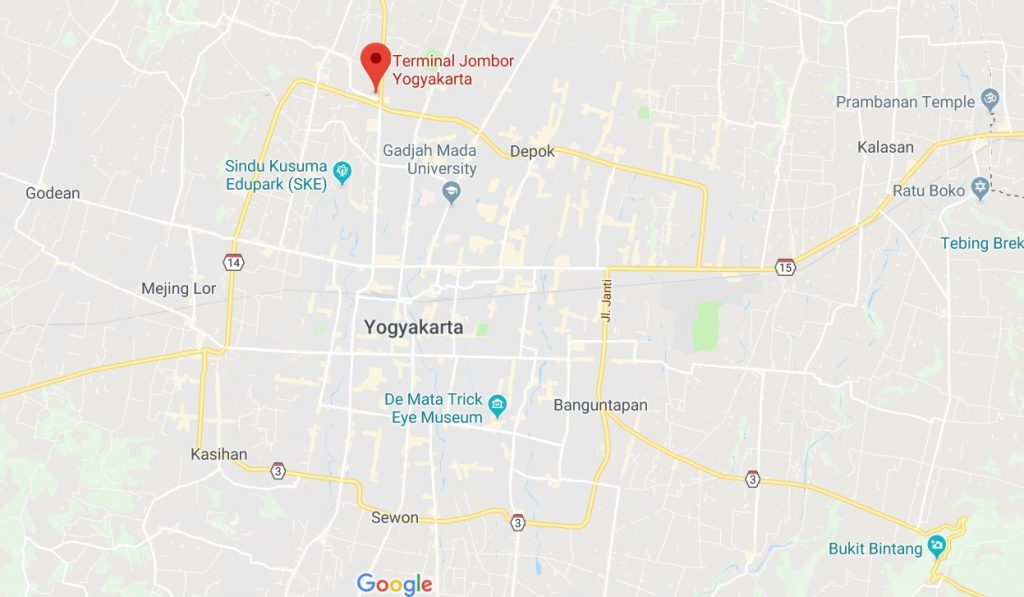
The easiest way is to call a Grab car. I am a solo traveller, so I always used a Grab bike (see my review here), which is not only much cheaper, but faster too. Jombor is a very simple local bus terminal, and if a foreigner suddenly appears, everyone will want to try to help you – no, not expecting money for their help! They ask you where you are going (actually, the question is likely to be: “You going to Borobudur?”), and then lead you to the correct bus. This is, by the way, only one little thing that shows how incredibly nice and helpful Javanese people are! It will be a local bus, so don’t expect anything fancy. The seats are not extremely comfortable, and it doesn’t look awfully clean either, but it is OK. I was the only foreigner on the bus this time.
The bus leaves when it leaves, wait patiently. Although I didn’t have to wait very long, and I had a little chat with some people while I was waiting. You will pay a few minutes after the bus leaves the terminal, a guy will come and collect the money: 25.000 rupiahs, and you won’t get a ticket, but don’t worry, no-one gets one.
The bus ride will take about 1,5 hours. When you arrive at Terminal Borobudur, a group of loud taxi drivers will get at you in no time, some of them actually get on the bus before you could even collect your luggage, and offer you their services. They will tell you that Borobudur temple is about 10 kilometres away, and they will take you there for 10.000 IDR. Now ten thousand rupiahs is really not much, but I am tired of people lying to me only to make me pay for something that I really don’t need. The truth is, the temple of Borobudur is about one kilometre away from the bus terminal, and it is a nice little walk. So it’s us up to you: you may pay them to save you from walking five minutes along the road lined with shops that you may actually enjoy looking at, or tell them nicely to f… off.
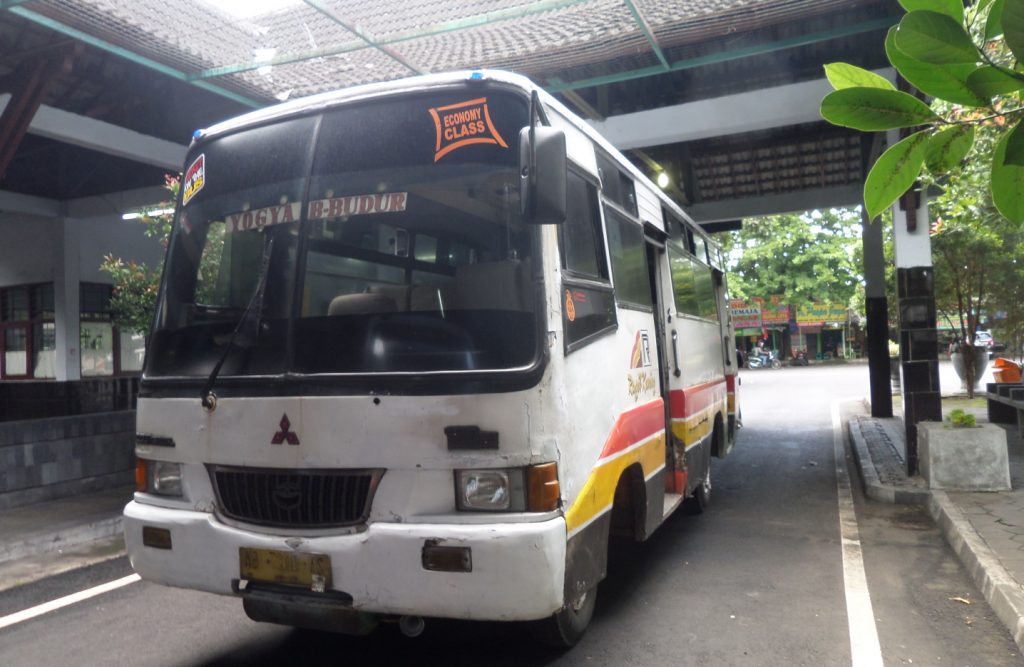
Public bus to Prambanan
Since Prambanan is close to the city of Yogja (near the airport), there is a regular public bus that you can take there from the city centre. You will have to find a bus stop of bus No 1A. A list of the stops is available on this Wikipedia page. It has stops along Malioboro and at Tugu Jogja, too – near all the tourist sights in fact. Since this is a regular bus, it may happen that you will have to stand at least for some time, but it doesn’t take very long anyway.
When you arrive (final stop), the same thing will happen that you experience at the Borobudur bus terminal (see above). Send the drivers away and walk a few minutes to the entrance of Prambanan, or use their services if you want. The ticket price is 3500 IDR one way, and you have to buy it at the bus stop, where there is almost always a staff who sell you the ticket. If you board the bus at an unstaffed stop, you buy the ticket on the bus. You can catch the same bus back to Yogja centre when you are finished with the temple tour.
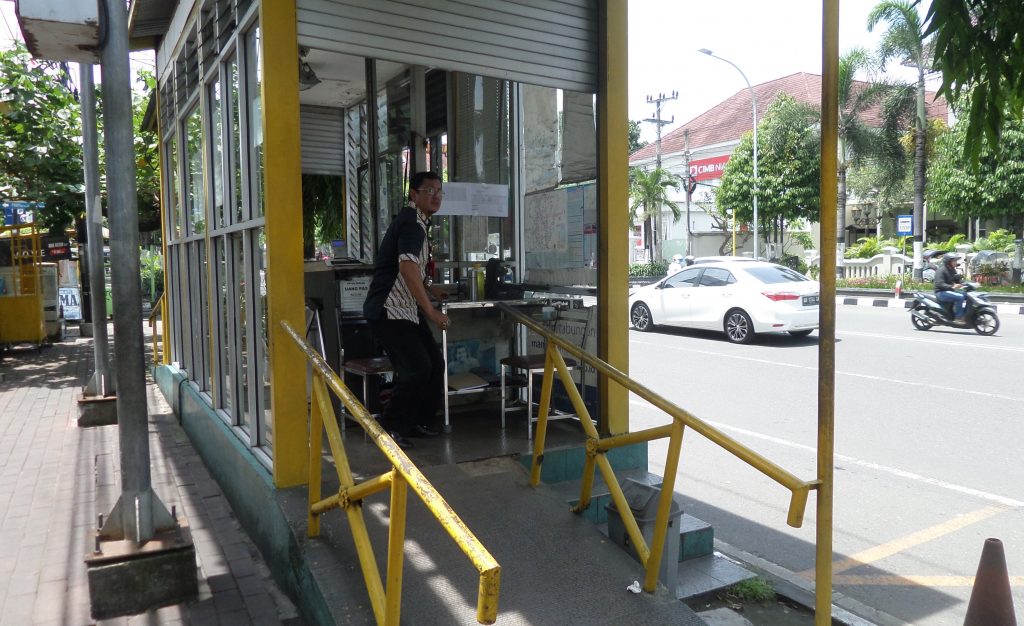
Ticket to Borobudur and Prambanan
Entrance fee to Borobudur OR Prambanan is 30.000 IDR for locals, and 450.000 for foreigners each. No, not a mistake: thirty vs four hundred and fifty, and this allows you entrance to one of the sights only. But you can buy a combo ticket, which is valid for both Borobudur and Prambanan, and that will cost you 560.000 IDR. But there is a catch: you can only use the tickets during today and tomorrow, two consecutive days. So you either visit both temples on the same day – in this case you’d better start early in the morning – or visit one temple today, and the other one tomorrow. If tomorrow happens to be a rainy day, well, that’s your problem, the gods are not on your side then.


